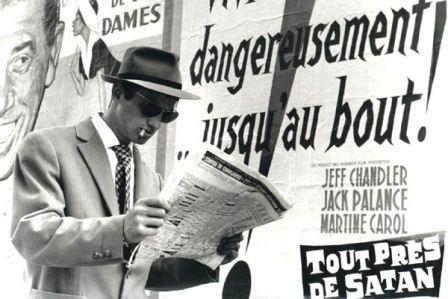How new was the New Wave?
The French New Wave came in two different phrases starting with the first from 1958 – 62. This was the most popular in French cinema for a long time as it spoke to the younger audiences and of the youth culture at that time.
The New Wave certainly borrowed traits and characteristics from other film movements which has prompted this question of how new the New Wave actually was. The influence of Neo-Realism on French films of this era is clear as they use a documentary style. This is just the start as the use of location is extremely prominent, along with the use of untested and new actors. Whilst this all points towards the New Wave being almost a copy of the Neo-Realistic movement which happened earlier in Italy, the real reason for this use of similar traits lies in the strict budgets of the filmmakers. Handheld cameras were used for the majority of the shots which resulted in a lot of improvisation and innovation in the way camera angles and movements were used. Studio shots were also rejected due to cost and this lent to the realistic tone of the films.
Furthermore, Sterritt also outlines the influence that the Beat Generation had on Godard in particular (1999, p.42-62). The Beat sensibility and spirit reached its peak of influence during the first New Wave but had been gaining popularity since the early 50s in post-war America. The Beat culture means “More than mere weariness, it implies the feeling of having been used, of being raw … it means being undramatically pushed up against the wall of oneself” (Holmes, 1952). The movement wanted a sense of immediacy which just wasn’t available in the war or the years following.

One of the most popular films of the first New Wave was Jean Luc-Godard’s Breathless (1960). Breathless shares the Beat tone in its content as well as in its form. Starting with the form, Godard’s postproduction techniques of adding jump cuts to avoid the standard continuity editing at key points in the film often drove the film forward to its conclusion which is a clear indicator of the influence which Godard took from Beat as it gives a sense of immediacy which isn’t available with classically edited films (Sterritt, 1999, p.42-62). “No film would try harder than Breathless to fix simplicity straight in the eye. No film so joyously and cavalierly disregards finesse and technical competence in the pursuit of direct expression” (Andrew, 1987, p.8).
Early in the film, we see the main character Michel walk past a poster which bares the message: “To Live Dangerously Until The End”. The message embodies Beat culture successfully as it suggests that simply waiting for life to happen around you isn’t good enough and with the Cold War in its early stages at this time, the youth of America took this message as gospel. This attitude is also found in Breathless as Michel “accepts death’s terms not in the self-conscious style of a Hollywood hero but in the casual, taken for granted manner” (Sterritt, 1999, p.48) which was the perfect end to the cavalier lifestyle the character portrayed throughout the film and shows how Godard takes the ideology of Beat culture with him through the whole film.
In conclusion, it is clear that the New Wave took many influences from pre-existing film and social movements but the way it uses them to create something unique and innovative as seen in Breathless.
Andrew, D. (1987). Breathless. United States: Rutgers University Press.
Godard, J. (Director). (1960). Breathless [Motion Picture]. France: Les Films Impéria.
Holmes, J. (1952, November 16). This is the Beat Generation. The New York Times Magazine.
Sterritt, D. (1999). The Films of Jean-Luc Godard: Seeing the Invisible. Cambridge: Cambridge University Press.
Blog 898809 is a great example of a successful blog according to the academic marking criteria. The fantastic presentation is a key feature which stood out to me with images which were well thought out and relevant clips where the scene is mentioned in the text making the blog easy to navigate and read. The abundance of references seen in every post suggests to me that the writer is very well read around the topics of which they were writing. They also use them intelligently in order to support the points they are making very well. Finally, the subject content is outstanding with the writer showing a clear knowledge of the films they are discussing but also the implications they have had on the subject they are writing on.

Leave a comment